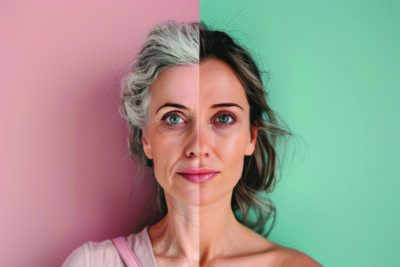
Performing arts medicine marks the crossroads of creativity and science, supporting dancers, musicians, and other performers whose bodies and minds are their greatest tools. These artists face unique risks such as injuries, overuse, fatigue, and anxiety that can threaten careers and limit artistic expression.
In response, medical experts and researchers have developed new ways to help artists stay healthy, recover faster, and sustain peak performance. Dr. Don Goodman, a certified Hypnotherapist and Biofeedback Technician, holds dual PhDs in Psychology and Music, explores how recent advances have put powerful new tools in the hands of both artists and their care teams, shaping a safer future on stage and behind the scenes.
New Technologies Improving Injury Prevention and Recovery
A wave of new technology now guards artists against the physical tolls of training and performance. Smart wearables, motion analysis tools, and AI-powered systems are reshaping everything from injury prevention to personalized recovery plans.
“A wave of groundbreaking technology is revolutionizing how performing artists prevent and recover from injury,” says Dr. Don Goodman, “From smart wearables to artificial intelligence and motion analysis systems, these tools are helping dancers, musicians, and other performers stay in peak condition while minimizing physical risk.”
By integrating precision diagnostics and real-time feedback into daily routines, artists and their care teams can make informed decisions that support long-term health and creative excellence. Among the most impactful innovations are advanced motion capture systems, which map physical movement in three dimensions with extraordinary accuracy. Whether it’s a dancer’s leap or a violinist’s bowing technique, every gesture is recorded in minute detail.
This data allows medical professionals and trainers to assess body mechanics, identify strain points, and intervene before minor issues escalate into serious injuries. Biomechanical analysis, built on these recordings, helps optimize performance by adjusting technique or movement patterns. For instance, therapists might modify a jump to reduce knee stress or refine a pianist’s wrist alignment to avoid repetitive strain.
Wearable sensors also play a critical role in injury prevention and recovery. These compact devices can be seamlessly integrated into clothing or instruments to monitor movements, muscle fatigue, posture, and repetition during practice and performance. For dancers, sensors may vibrate as a warning when the landing technique becomes unsafe. For musicians, the technology highlights subtle physical habits that could lead to overuse injuries. This constant stream of data offers a previously unseen window into the physical toll of artistic effort, empowering artists and instructors to make real-time adjustments and promote sustainable habits.
Artificial intelligence is further advancing the field by enhancing diagnostic capabilities. AI-powered systems analyze medical imaging such as MRIs and ultrasounds, detecting signs of injury that human observers might overlook, like microscopic stress fractures or early-stage tendon inflammation. Some platforms can compare thousands of similar cases to recommend the most effective treatment strategies.
AI-driven applications also create dynamic rehabilitation plans tailored to each individual’s progress, adjusting exercises and timelines based on real-time feedback to accelerate healing while minimizing the risk of re-injury.
These technological advancements are reshaping care and redefining what’s possible for artists striving to maintain their health. With the support of smart tools and data-informed therapy, performers can train with greater confidence, recover more efficiently, and sustain their craft at the highest level for years to come.
Therapeutic Approaches Addressing Physical and Mental Health
Excellence in the performing arts demands a finely tuned balance of physical capability and mental resilience. As a result, the field of performing arts medicine has evolved to support the complete well-being of artists, offering therapies that extend past conventional care to address the unique rigors of creative performance. This holistic approach includes specialized physical rehabilitation, mental health support, and lifestyle optimization, all tailored to the high intensity demands of professional performance careers.
Traditional rehabilitation methods often fall short when applied to dancers, musicians, and stage performers, whose daily routines involve repeated motions, extreme flexibility, and prolonged physical exertion. Recognizing this gap, healthcare providers have introduced rehabilitation programs specifically designed for the arts.
These therapies account for performance-specific risks and recovery timelines, integrating modalities such as resistance band training, aquatic therapy, and even virtual reality simulations to recreate stage environments. By mimicking the real-world conditions of performance, therapists can better guide artists through a recovery process that heals but also prevents reinjury.
Clinics often include performance-based progress tracking and structured return-to-stage programs, ensuring a safe and confident reentry to professional activity. Equally essential to an artist’s longevity is mental wellness. The pressure to excel, coupled with performance anxiety and the emotional toll of creative vulnerability, can weigh heavily on performers. Mental health services in performing arts medicine now focus intensely on helping artists build psychological resilience.
Notes Dr. Goodman, “Therapy options range from individualized counseling to group sessions, mindfulness training, and stress management strategies. Performance psychologists specialize in enhancing mental focus, managing perfectionism, and navigating career disruptions or personal loss.”
These resources offer a safe space for artists to process challenges and strengthen their mental health, which in turn supports more confident and consistent performance. Complementing these services are programs that emphasize the importance of nutrition and sleep, two critical but often overlooked pillars of artistic health. Personalized plans guide performers in optimizing their diets to maintain energy, enhance focus, and support physical endurance.
Advanced hydration tools and wearable tech track water intake and alert users to early signs of fatigue or dehydration. Similarly, sleep optimization plans take into account travel schedules, performance hours, and the irregular routines typical in the arts, helping performers establish consistent rest habits that protect against burnout. Together, these integrative practices ensure that artists can meet the demands of their craft with strength, clarity, and sustained creativity.
The Future of Performing Arts Medicine
Looking ahead, the future of performing arts medicine promises even greater synergy between innovation and artistry. As emerging technologies become more refined and accessible, the boundary between healthcare and performance will continue to dissolve, fostering environments where prevention, resilience, and peak capability are built into every level of training.
Artificial intelligence, real-time data analytics, and personalized health modeling may soon allow for predictive injury assessments and proactive wellness strategies tailored to each artist’s unique physiology and career trajectory.
“At the same time, the cultural conversation around mental health and holistic care is evolving. Institutions and companies are beginning to recognize the value of comprehensive support systems that prioritize long-term sustainability over short-term output,” says Dr. Goodman.
This shift signals a broader transformation within the arts—one that embraces the full humanity of the performer. Future advances in performing arts medicine will likely emphasize inclusivity, adaptability, and empowerment, enabling artists of all backgrounds and disciplines to thrive.
As these fields converge, the goal will no longer be about simply treating injuries or managing fatigue, but to redefine what’s possible in performance. The next era will empower artists to endure the demands of their craft, rising above them with greater freedom, creativity, and longevity.
DISCLAIMER: No part of this article was written by The Signal editorial staff.






